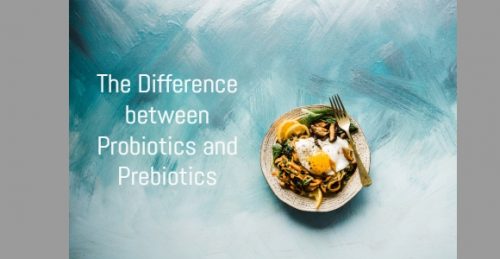The Difference between Probiotics and Prebiotics
Probiotics and Prebiotics
You might think that your digestive system serves only to help you process and extract the nutrients in your foods.
It does that, of course, but it does much, much more.
In fact, your gastrointestinal tract is the “second brain”. That’s a complex system that sends and receives all kinds of information to and from your “first” brain. The “brain” in your gut has a variety of receptors that gather information about conditions in your digestive tract. It then sends signals to your “first’ brain, which uses that information to control digestive function.
The Gut Microbiome Probiotics and Prebiotics
An important player in all of this is the gut “microbiome” – which is really a world within you. Your microbiome is an entire ecosystem composed of trillions of diverse organisms (including bacteria, fungi and viruses). It weights between two and six pounds and has profound effects on your health.
One of the primary functions of the microbiome is to break down dietary fiber. Since the human body lacks the machinery to get the job done. The microbiome also supports the health of your immune system (much of which resides in your gut) It helps keep out foreign invaders that could make you sick, and manufactures several essential vitamins.
With so many important roles that it has in protecting your health; there is increasing attention to the role that diet plays in maintaining the health of your microbiome.
We don’t know exactly what the ideal composition of the microbiome should be. But we do know that the more diverse the population of inhabitants in your gut, the better. The foods you put into your system have a big influence on maintaining a healthy balance of the microbes in your gut. Which, in turn, helps your two “brains” to optimally work together.
Prebiotics Probiotics and Prebiotics
Prebiotics are the compounds in many of the high fiber foods that you eat. Humans lack the ability to break down the fiber that we consume in foods like fruits, vegetables, beans and whole grains. However the microbes in your gut are more than happy to do the job for you, in a process referred to as “fermentation”.
The microbes ferment the dietary fiber that you eat. They produce certain compounds that serve as fuel for the cells that line your intestinal tract. Thus helping to keep it healthy.
Prebiotic compounds are particularly abundant in bananas, onions, garlic, leeks, asparagus, artichokes, tomatoes, plums, apples, nuts, soybeans and whole-wheat foods.
Probiotics Probiotics and Prebiotics
The word “probiotic” derives from the Greek (“promoting life”). And probiotics certainly do just that in your digestive tract. Probiotics are the “good” bacteria (sometimes called live cultures) that you can consume from foods or supplements. Probiotics are the same bacteria that reside in your gut. Taking in probiotics can help to balance the populations of the various types of bacteria in your gut. Which, in turn, promotes gut health.
While the idea of consuming bacteria may not sound appealing, it’s likely that you already consume them without realizing it. You find probiotics in many fermented foods. Fermentation is a natural process in which bacteria convert sugars and other carbohydrates in foods into acids. That’s why many naturally fermented foods have a tangy taste.
For many people, the most common source of probiotics is fermented dairy products such as yogurt, kefir and certain aged cheeses. In fact, one of the most common strains of probiotic bacteria that reside in your intestines is Lactobacillus acidophilus. You can find it in yogurt.
You can also obtain beneficial probiotics from fermented vegetables such as pickles, kimchi, olives and sauerkraut (only when sold refrigerated; canned products are heated during processing, which destroys the beneficial bacteria). Other sources include fermented soy products such as miso and tempeh, cultured non-dairy yogurts (look for “live active cultures” on the label) and kombucha beverages.
source – DiscoverGoodNutrition
